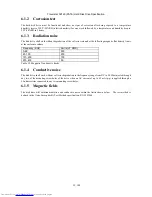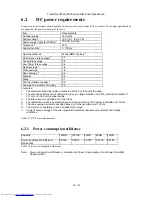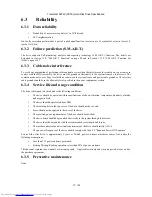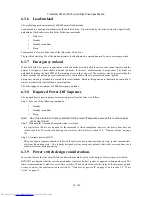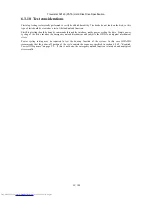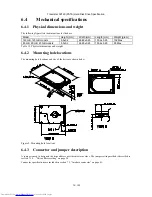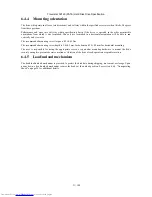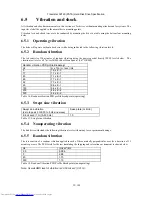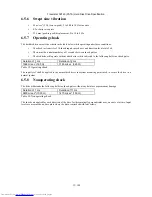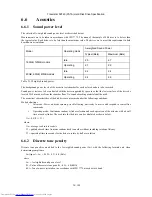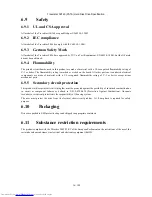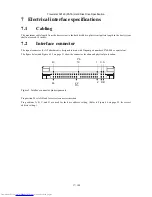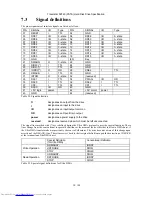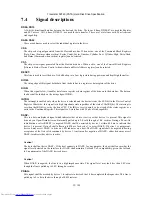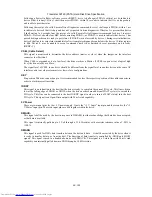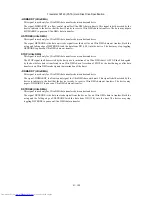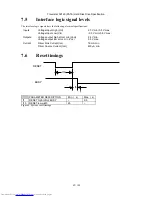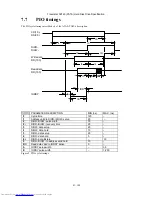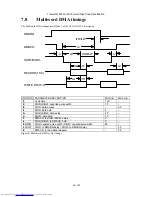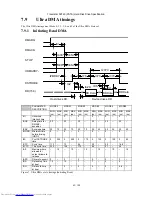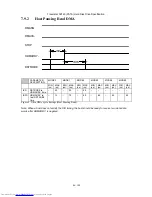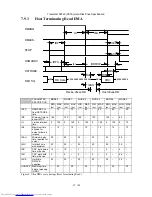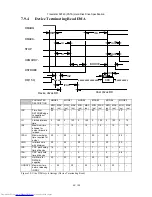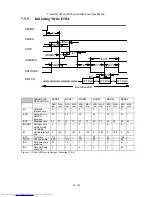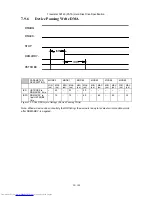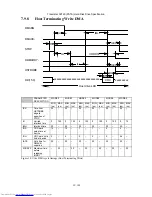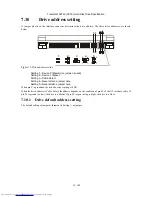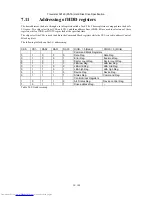
Travelstar 5K160 (PATA) Hard Disk Drive Specification
39
/
188
7.4 Signal
descriptions
DD00–DD15
A 16-bit bi-directional data bus between the host and the drive. The lower 8 lines, DD00-07, are used for Register
and ECC access. All 16 lines, DD00–15, are used for data transfer. These are 3-state lines with 24 mA current
sink capability.
DA00–DA02
These are addresses used to select the individual register in the drive.
CS0-
The chip select signal generated from the Host address bus. When active, one of the Command Block Registers
[Data, Error (Features when written), Sector Count, Sector Number, Cylinder Low, Cylinder High, Drive/Head
and Status (Command when written) register] can be selected.
CS1-
The chip select signal generated from the Host address bus. When active, one of the Control Block Registers
[Alternate Status (Device Control when written) and Drive Address register] can be selected.
RESET-
This line is used to reset the drive. It shall be kept at a Low logic state during power up and kept High thereafter.
DIOW-
The rising edge of this signal holds data from the data bus to a register or data register of the drive.
DIOR-
When this signal is low, it enables data from a register or data register of the drive onto the data bus. The data on
the bus shall be latched on the rising edge of DIOR-.
INTRQ
The interrupt is enabled only when the drive is selected and the host activates the -IEN bit in the Device Control
Register. Otherwise, this signal is in high impedance state regardless of the state of the IRQ bit. The interrupt is
set when the IRQ bit is set by the drive CPU. The IRQ is reset to zero by a host read of the status register or a
write to the Command Register. This signal is a 3-state line with 24 mA of sink capability.
DASP-
This is a time-multiplexed signal which indicates that a drive is active or that device 1 is present. This signal is
driven by an Open-Drain driver and internally pulled up to 5.0 volts through a 10 k. resistor. During a Power-On
initialization or after RESET- is negated, DASP- shall be asserted by device 1 within 400 ms to indicate that
device 1 is present. Device 0 shall allow up to 450 ms for device 1 to assert DASP-. If device 1 is not present,
device 0 may assert DASP- to drive an LED indicator on a host. The DASP- signal shall be negated following
acceptance of the first valid command by device 1. Anytime after negation of DASP-, either drive may assert
DASP- to indicate that a drive is active.
Caution!
The host shall not drive DASP-. If the host connects to DASP- for any purpose, the host shall ensure that the
signal level detected on the interface for DASP- shall maintain VoH and VoL compatibility, given the IoH and
IoL requirements of the DASP- device drivers.
Caution!
When DASP- is negated, the line is in a high impedance state. The signal level may look less than 5.0V even
though the line is pulled up to 5.0V through a resistor.
PDIAG-
This signal shall be asserted by device 1 to indicate to device 0 that it has completed the diagnostics. This line is
pulled up to 5 volts in the drive through a 10 k
Ω
resistor.

